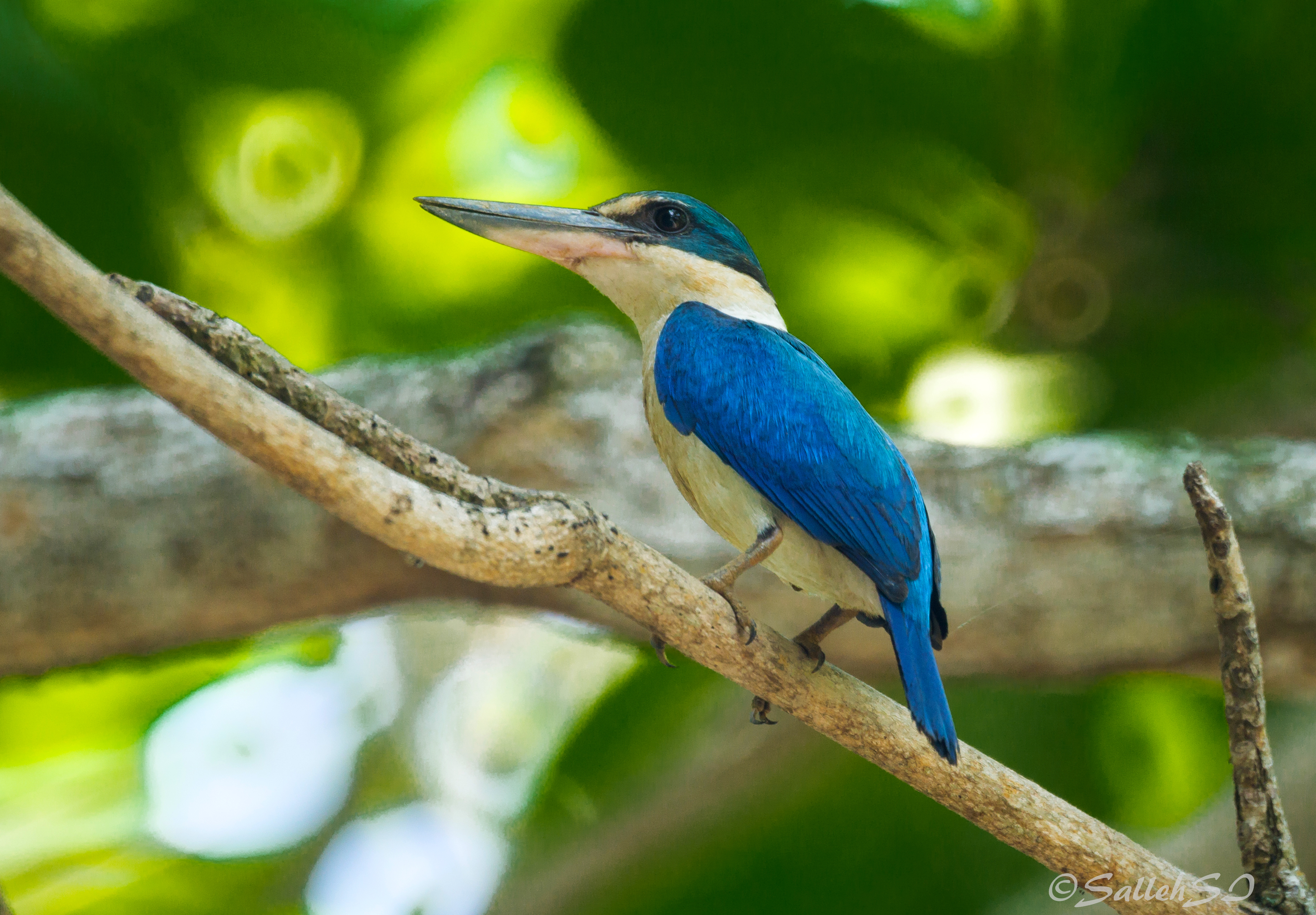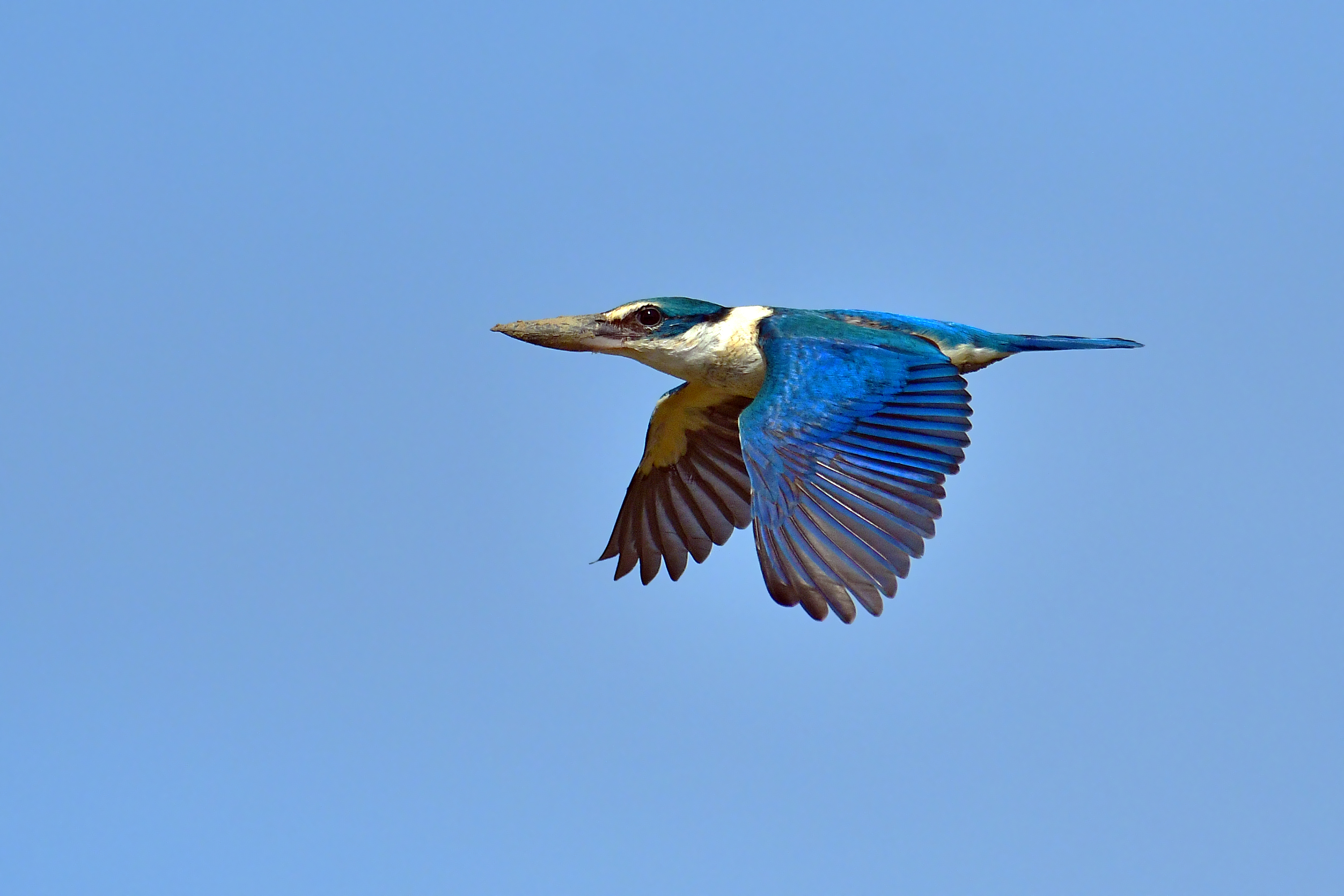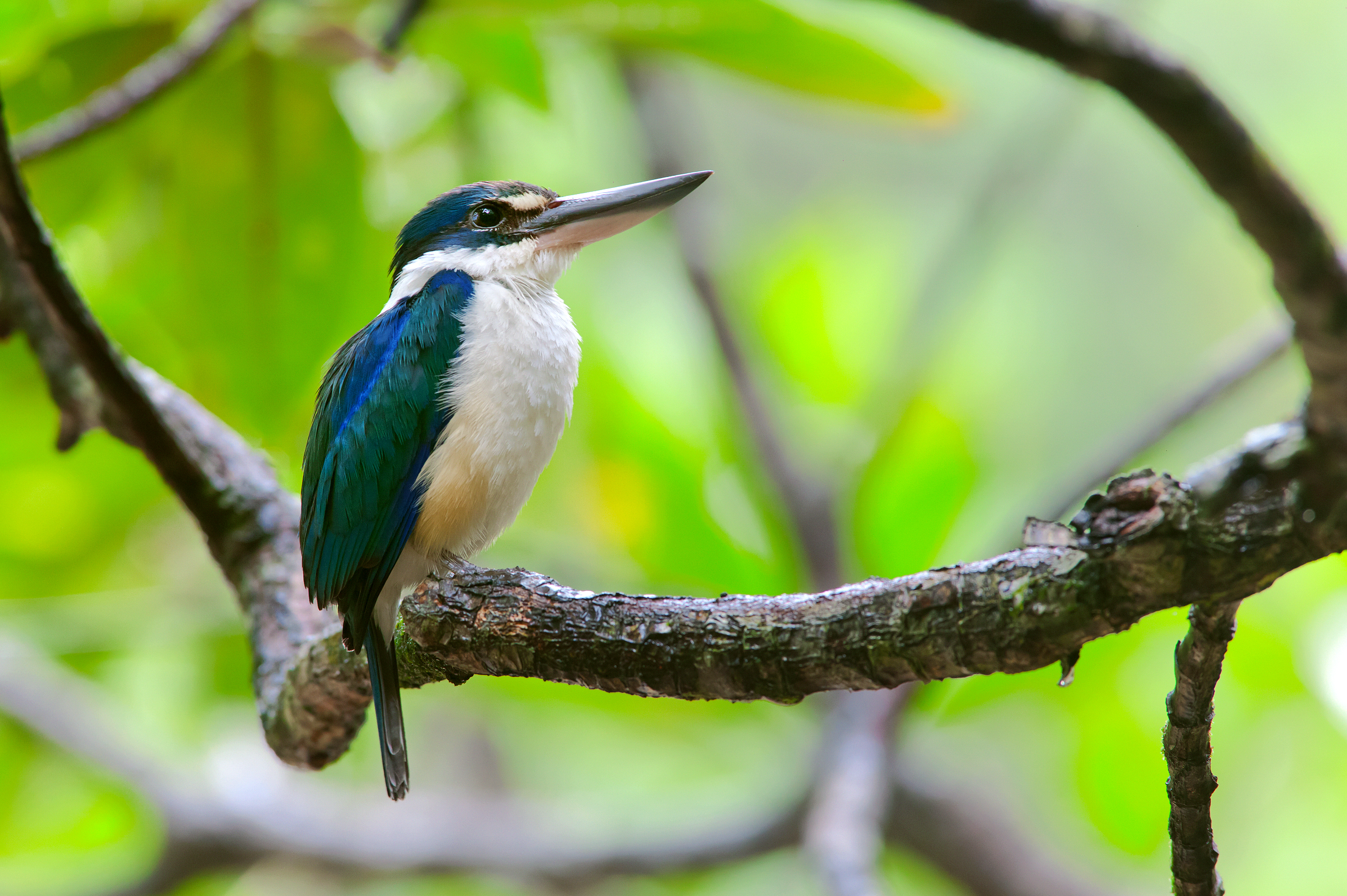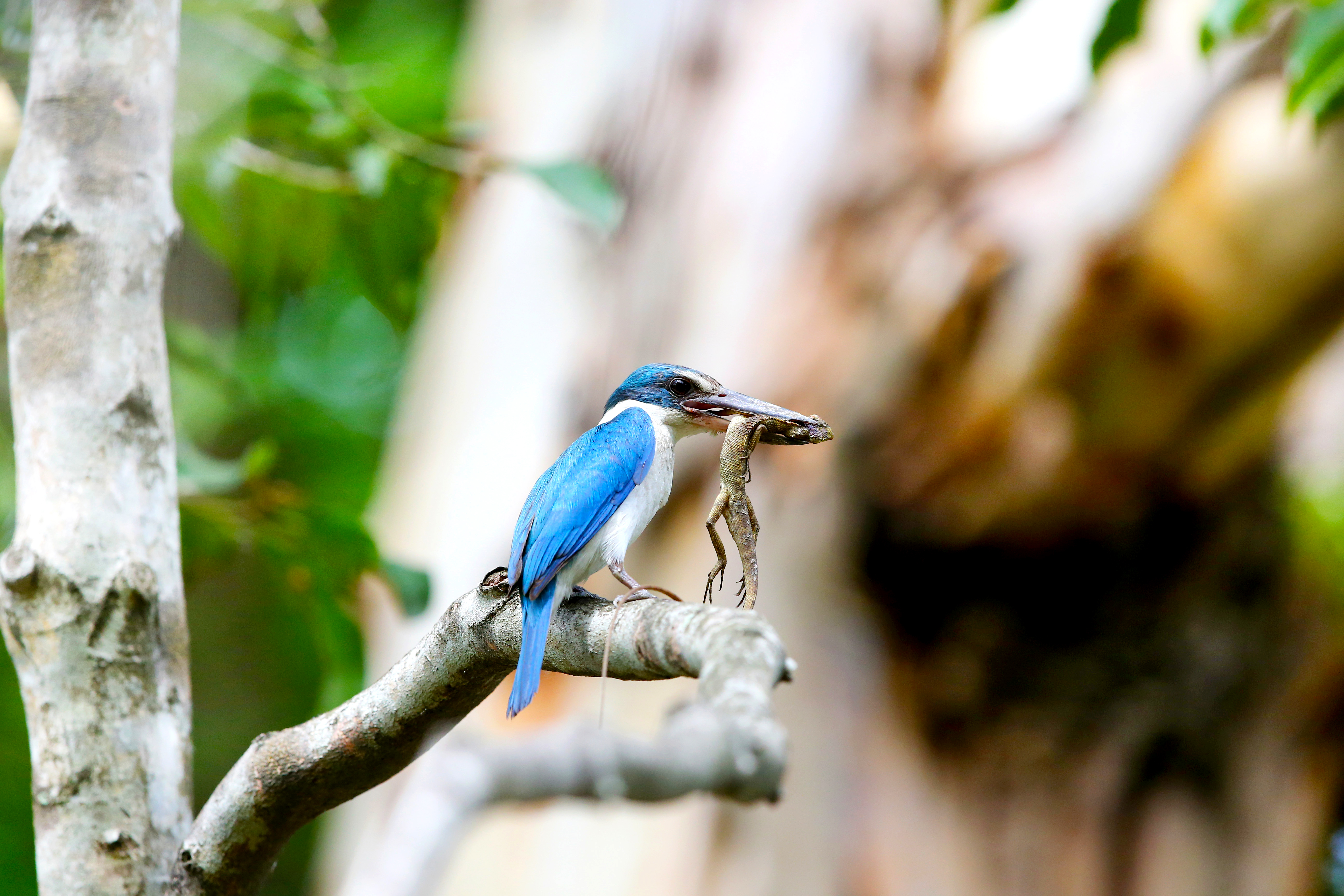May 28, 2019
Meet the Collared Kingfisher (Todiramphus chloris). This kingfisher, which is also known as the White-collared Kingfisher or Mangrove Kingfisher, is called Cekakak sungai in Indonesia.
The Collared Kingfisher is native to many countries, including Australia, Bangladesh, China, Fiji, Japan, Somalia, Saudi Arabia, the United Arab Emirates and Vietnam. In Singapore specifically, the Collared Kingfisher is actually the most common species of kingfisher.

As it is found in many places, the Collared Kingfisher is viewed as a Least Concern (LC) species by the International Union for Conservation of Nature (IUCN), meaning that it is far from extinction. However, the Collared Kingfisher is a species which is protected under Indonesian law.
This bird is commonly found in coastal areas, especially in mangrove swamps. It also inhabits farmland, open woodland, grassland and gardens.

The Collared Kingfisher is also one of the 304 species of birds which have been identified in the Restorasi Ekosistem Riau (RER) area, where it is observed to be a resident species. It’s also one out of the eight different species of kingfishers which can be found in RER.
It’s considered to a medium-sized bird, measuring 22 to 29 cm in length and weighing 50 to 90 g.
The Collared Kingfisher gets its name from a white collar around its neck. The rest of the bird is typically a blue-green colour, with white or buff underparts.

This species is an aggressive species, both towards their own species and towards other species. It may snatch food from other birds or attack other animals which enter its breeding territory.
The Collared Kingfisher can perch motionless over long periods on rocks or bare branches, just waiting for prey, which it uses its bill to stab. If it catches large prey, the bird will pound it against tree branches until the prey is subdued.
The Collared Kingfisher finds cleanliness to be important, and will dive into water to bathe before flying to a perch to dry off in the sunlight. It also keeps its bill in excellent condition by scraping it back and forth against a tree branch.

The Collared Kingfisher is one of the 299 species of birds included in a bird checklist which was published by the RER in 2017.